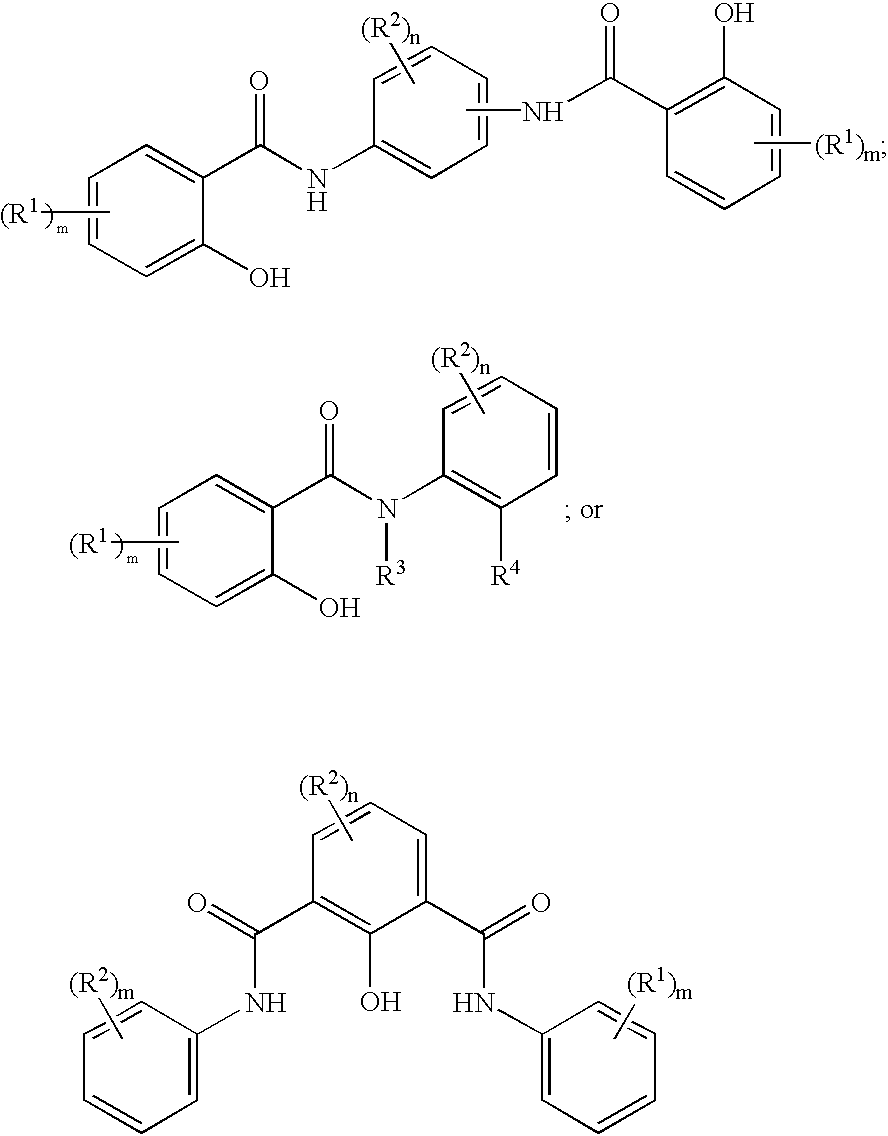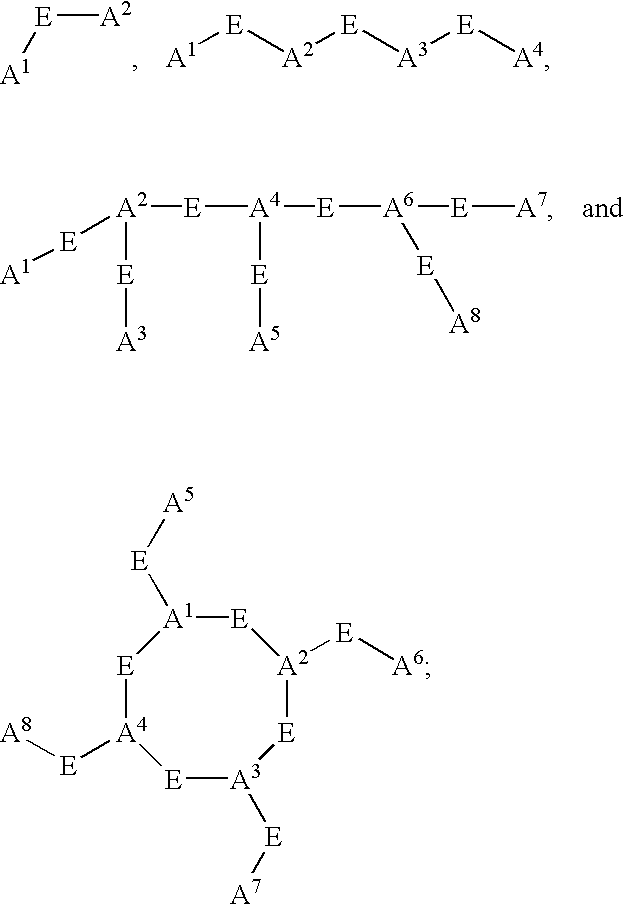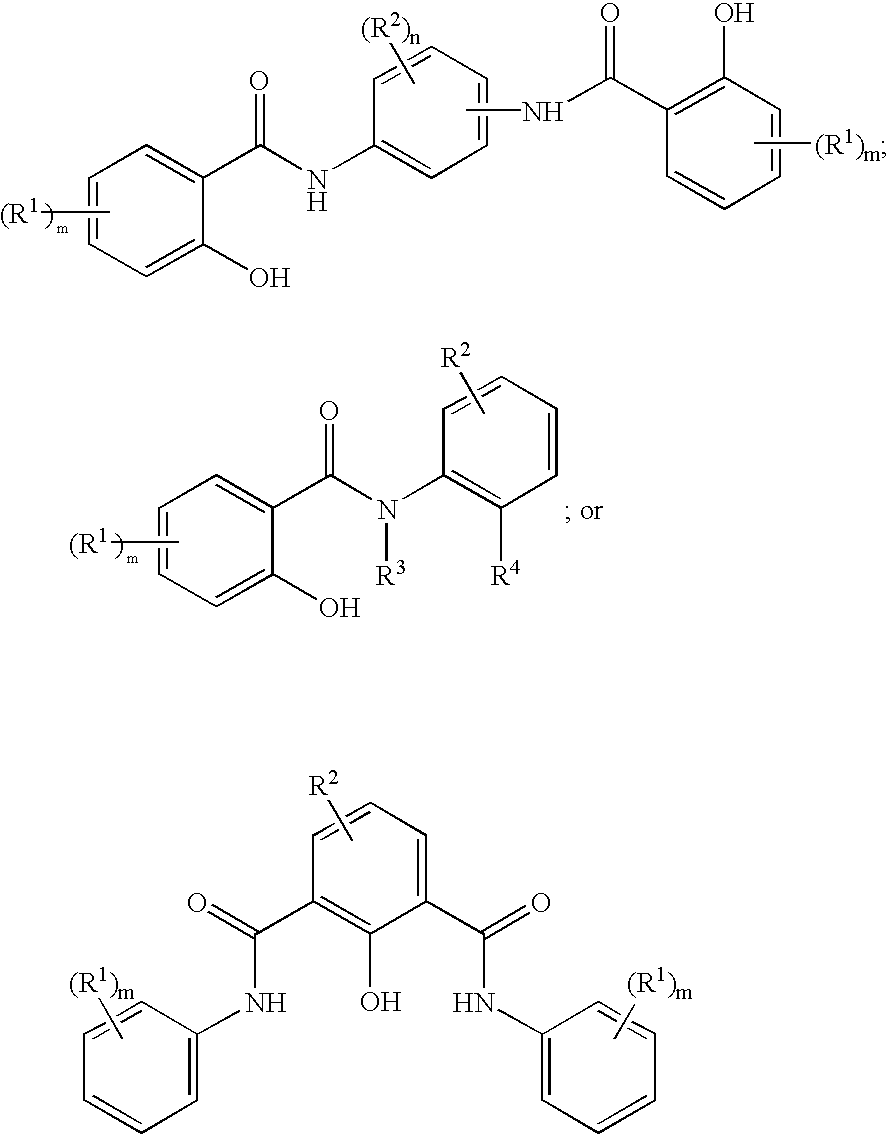Labeled macrophage scavenger receptor antagonists for imaging atherosclerosis and vulnerable plaque
a technology of atherosclerosis and labeled macrophages, applied in the field of detection labeled macrophage scavenger receptor antagonists, can solve the problems of angina or ischemic sudden death, many unanswered questions, and fatal thrombotic even
- Summary
- Abstract
- Description
- Claims
- Application Information
AI Technical Summary
Problems solved by technology
Method used
Image
Examples
embodiment 14
[0178] [15] Another embodiment of the present invention provides the method of embodiment 14 wherein the cardiovascular disease is selected from: atherosclerosis, vulnerable plaque, coronary artery disease, renal disease, thrombosis, transient ischemia due to clotting, stroke, myocardial infarction, organ transplant, organ failure and hypercholesterolemia
[0179] [16] Another embodiment of the present invention provides a method to monitor the progression of an atherosclerotic lesion in a patient. The method comprises administering to the patient in need of such monitoring an effective amount of a compound of embodiment [1], [2], [3], [4], or [5] and detecting the presence of the compound.
[0180] [17] Another embodiment of the present invention provides a method to detect vulnerable plaque in a patient. The method comprises administering to the patient in need of such detection a compound of embodiment [1], [2], [3], [4], or [5] and detecting the presence of the compound.
[0181] [18] An...
embodiment 20
[0184] [21] Another embodiment of the present invention provides a method of embodiment 20 wherein the cardiovascular disease is selected from: atherosclerosis, vulnerable plaque, coronary artery disease, renal disease, thrombosis, transient ischemia due to clotting, stroke, myocardial infarction, organ transplant, organ failure and hypercholesterolemia
[0185] [22] Another embodiment of the present invention provides a method to monitor a cardiovascular disease in a patient. The method comprises administering to the patient in need of such monitoring an effective amount of a compound of embodiment [6], [7], [8], [9], or [10] and detecting the presence of the compound.
embodiment 22
[0186] [23] Another embodiment of the present invention provides a method of embodiment 22 wherein the cardiovascular disease is selected from: atherosclerosis, vulnerable plaque, coronary artery disease, renal disease, thrombosis, transient ischemia due to clotting, stroke, myocardial infarction, organ transplant, organ failure and hypercholesterolemia
[0187] [24] Another embodiment of the present invention provides a method to monitor the progression of an atherosclerotic lesion in a patient. The method comprises administering to the patient in need of such monitoring an effective amount of a compound of embodiment [6], [7], [8], [9], or [10] and detecting the presence of the compound.
[0188] [25] Another embodiment of the present invention provides a method to detect vulnerable plaque in a patient. The method comprises administering to the patient in need of such detection a compound of embodiment [6], [7], [8], [9], or [10] and detecting the presence of the compound.
[0189] [26] An...
PUM
| Property | Measurement | Unit |
|---|---|---|
| atomic number | aaaaa | aaaaa |
| atomic number | aaaaa | aaaaa |
| atomic number | aaaaa | aaaaa |
Abstract
Description
Claims
Application Information
 Login to View More
Login to View More - R&D
- Intellectual Property
- Life Sciences
- Materials
- Tech Scout
- Unparalleled Data Quality
- Higher Quality Content
- 60% Fewer Hallucinations
Browse by: Latest US Patents, China's latest patents, Technical Efficacy Thesaurus, Application Domain, Technology Topic, Popular Technical Reports.
© 2025 PatSnap. All rights reserved.Legal|Privacy policy|Modern Slavery Act Transparency Statement|Sitemap|About US| Contact US: help@patsnap.com



